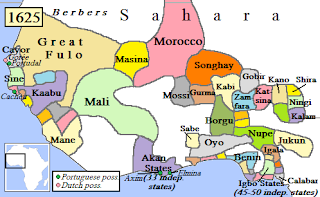THE STATE OF GAUL
OVERVIEW
The Gauls were Celtic peoples inhabiting Gaul in the Iron Age and the Roman period (roughly from the 5th century BC to the 5th century AD). Their Gaulish language forms the main branch of the Continental Celtic languages. |
| wikipedia.com |
EARLY HISTORY
 |
| google.com |
MODERN INFLUENCES
The Gauls played a certain role in the national historiography and national identity of modern France. Attention given to the Gauls as the founding population of the French nation was traditionally second to that enjoyed by the Franks, out of whose kingdom the historical kingdom of France arose under the Capetian dynasty; for example, Charles de Gaulle is on record as stating, "For me, the history of France begins with Clovis,
elected as king of France by the tribe of the Franks, who gave their
name to France. Before Clovis, we have Gallo-Roman and Gaulish
prehistory. The decisive element, for me, is that Clovis was the first
king to have been baptized a Christian. My country is a Christian
country and I reckon the history of France beginning with the accession
of a Christian king who bore the name of the Franks."
However, the dismissal of "Gaulish prehistory" as irrelevant for French national identity has been far from universal. Pre-Roman Gaul has been evoked as a template for French
 |
google.com |
Similarly, in
RELIGION
The Gauls practiced a form of animism, ascribing human characteristics to lakes, streams, mountains, and other natural features and granting them a quasi-divine status. Also, worship of animals was not uncommon; the animal most sacred to the Gauls was the boar, which can be found on many Gallic military standards, much like the Roman eagle.Their system of gods and goddesses was loose, there being certain deities which virtually every Gallic person worshiped, as well as tribal and household gods. Many of the major gods were related to Greek gods; the primary god worshiped at the time of the arrival of Caesar was Teutates, the Gallic equivalent of Mercury. The "father god" in Gallic worship was "Dis Pater". However, there was no real theology, just a set of related and evolving traditions of worship.
Perhaps the most intriguing facet of Gallic religion is the practice of the Druids. There is no certainty concerning their origin, but it is clear that they vehemently guarded the secrets of their order and held sway over the people of Gaul. Indeed, they claimed the right to determine questions of war and peace, and thereby held an "international" status. In addition, the Druids monitored the religion of ordinary Gauls and were in charge of educating the aristocracy. They also practiced a form of excommunication from the assembly of worshippers, which in ancient Gaul meant a separation from secular society as well. Thus the Druids were an important part of Gallic society.
SOCIAL ANATOMY
The head of the Gaulish political structure are the druids ,rituals ; however the Gaulish political structure is complex and elaborate. the elemental unit of the gaulish politics is the tribe, which consists of one or more pagi ( a kind of tribal group) , a council of elders and a vergobret ; a position much like a king, but its power is being put in check by the rules and norms put down by the council.
the tribal group or pagi are later selected and organized into larger super-tribal groups that the Romans called civitates . this grouping would also be the basis of France's eventual division into ecclesiastical bishoprics and dioceses, which would remain in place, with minimal changes until the French Revolution.
The state of Gaul is an unstablecountry even though the tribes seems to be mildly stable. Gaul entirely is politically divided as the various tribes have sentiments against each other, not until hard times like the invasion of caesar did the unite together under a single ruler; Vercingetorix
The Romans divided Gaul broadly into Provincia (the conquered area around the Mediterranean), and the northern Gallia Comata ("free Gaul" or "wooded Gaul"). Caesar divided the people ofGaulia Comata into three broad groups: the Aquitani; Galli (who in their own language were called Celtae); and Belgae . In the modern sense, Gaulish tribes are defined linguistically, as speakers of dialects of the Gaulish language. While the Aquitani were probably Vascons, the Belgae would thus probably be counted among the Gaulish tribes, perhaps with Germanic properties.
for more research on the great wars and dominance of the gauls in BC europe :
https://en.wikipedia.org/wiki/Gaul
The state of Gaul is an unstable
The Romans divided Gaul broadly into Provincia (the conquered area around the Mediterranean), and the northern Gallia Comata ("free Gaul" or "wooded Gaul"). Caesar divided the people of
https://en.wikipedia.org/wiki/Gaul




Comments
Post a Comment